Crock Pot or Slow Cooker Yogurt
on Sep 17, 2017, Updated Apr 17, 2025
This post may contain affiliate links. Please read our disclosure policy.
It’s so easy to make silky smooth Slow Cooker Yogurt at home with just two ingredients and prep time of only 5 minutes! This simple recipe saves money, reduces waste, and delivers fresh yogurt without any additives or preservatives.
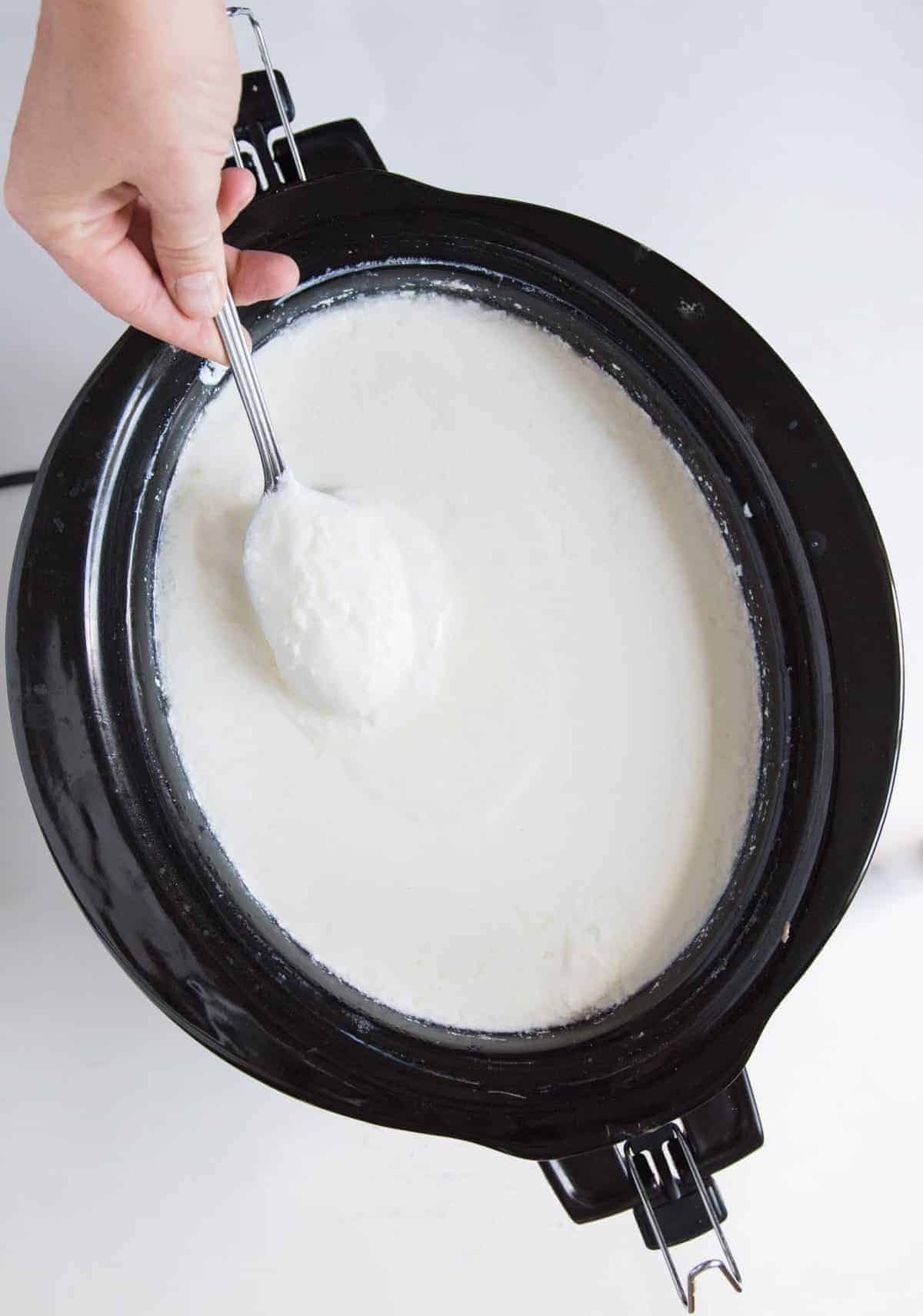
🥛Just 5 minutes of prep, and then slow cooker does the rest while you sleep. Such an easy way to get another option for homemade breakfast or snacks into your meal rotation!
My 2 Best Tips For Making Slow Cooker Yogurt
- Temperature Matters: The first time you make this recipe, use a thermometer to verify your slow cooker’s heating pattern. The ideal temperature for yogurt cultures is 110-115°F (43-46°C). Too hot and you’ll kill the cultures; too cool and they won’t activate properly.
- Quality Starters Make Quality Yogurt: Choose a high-quality plain yogurt with live active cultures for your beginning starter. Brands like Mountain High, Fage, or Chobani work well. Then you can start saving your own starter from each of your homemade batches. After a few batches, you may notice your yogurt becoming less thick—this is the time to introduce a fresh commercial starter.
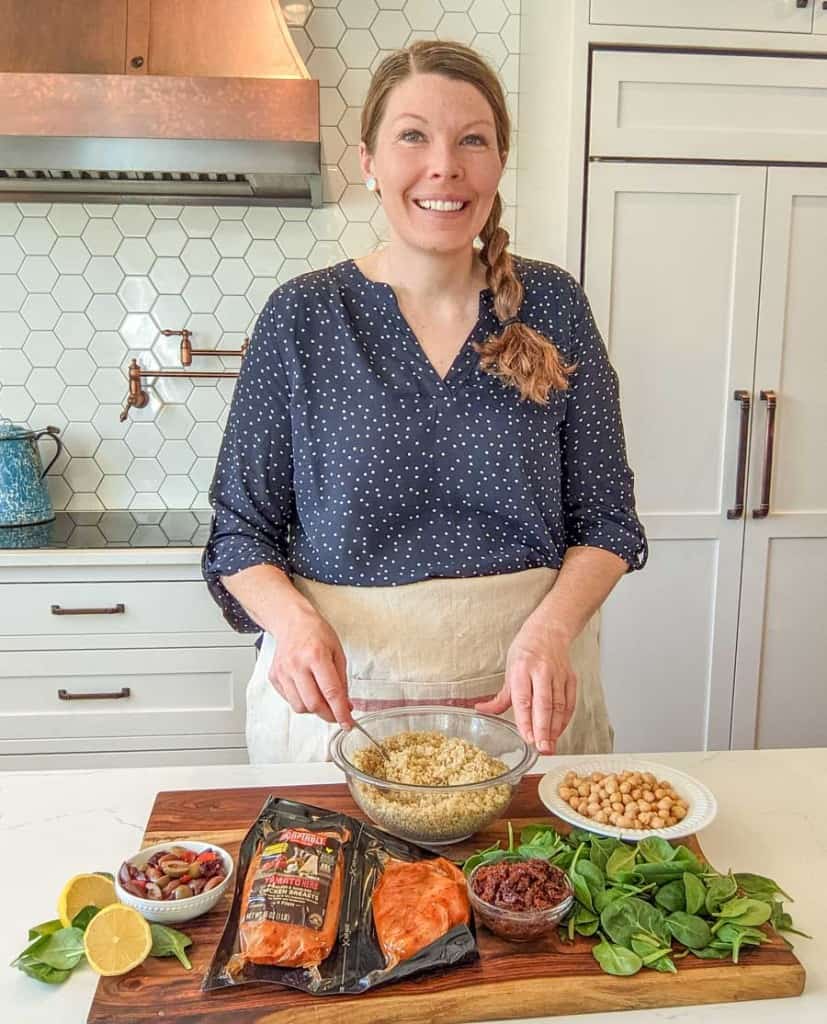
🩷 Melissa
I like to start this in the afternoon so that it’s ready to sit for its long 8-12 hour warm resting period overnight. We then wake up to fresh yogurt, and I’ll serve it with fresh fruit and some homemade granola.
This is a great way to to get organic yogurt on the cheap. You can buy a carton of organic milk and turn it into yogurt for about half the price of organic yogurt.
It is plain yogurt, but you can add honey, jams, fresh fruit, and just about anything else you like. I also use it in place of sour cream in most recipes.
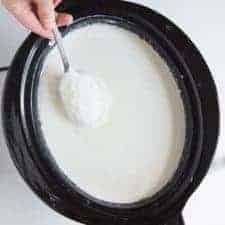
Slow Cooker Yogurt
Ingredients
- 1/2 gallon (8 cups) whole milk (you'll get a thinner product with a lower fat content milk)
- 1/2 cup commercial plain yogurt that says “Live and Active Cultures” on the tub, I have great success with Mountain High yogurt for my culture.
Instructions
- In a large crock pot, add the milk. Add the lid. Turn it on low for around 2 ½ hours.
- After that time has passed, unplug the crock pot and let it sit for 3 hours. I always set a timer for these or I don’t remember.
- After the 3 hours has passed, stir in the ½ cup of yogurt. Replace the lid of the crock pot and cover with two big towels or a blanket. Let rest for 8 to 12 hours (overnight works well). In the morning you'll have yogurt!

- Place it in a half-gallon mason jar and refrigerate for a few hours before serving. It will thicken up in the fridge. Keep a ½ cup of this yogurt for your next batch and say goodbye to buying yogurt!
- You can also let the yogurt strain in cheese cloth in the fridge for a few hours and you'll get a thicker Greek yogurt.

Video
Notes
- I highly recommend getting a little instant-read thermometer to make homemade yogurt since it’s all about the temperature.
- The goal is to scald the milk which takes place around 180°F. Check it with a thermometer the first time to see if the “warm” setting is warm enough or if maybe an hour and 45 minutes would work on low. Once you figure it out, I don’t think you would have to use the thermometer every time.
- After the milk is scalded, the waiting time is meant to bring the milk down to around 110-115°F so it’s still warm but won’t kill your yogurt culture.
- Serve with fresh fruit and granola
- Make yogurt bowls: 5 Easy Healthy Yogurt Bowl Ideas
- Homemade Fruit on the Bottom Yogurt Cups
- 4 Ingredient Healthy Strawberry Frozen Yogurt (5 minute recipe!)
- It also goes great in smoothies like my Key Lime Pie Smoothie, Strawberry Kiwi Smoothie, or Avocado Smoothie.
- Or try it in these amazing Soft and Puffy Greek Yogurt Sugar Cookies!
Nutrition
Recipe FAQs
Homemade yogurt typically stays fresh in the refrigerator for 1-2 weeks when stored in an airtight container. The flavor may become more tart over time as the cultures continue to slowly develop.
Several factors can affect thickness: using ultra-pasteurized milk, milk with lower fat content, culture that wasn’t active enough, or temperature issues during incubation. For thicker yogurt, try using whole milk, ensuring proper temperatures are maintained, or strain the finished yogurt through cheesecloth.
After your yogurt is made, simply line a fine-mesh strainer with cheesecloth, place it over a bowl, and pour in your finished yogurt. Allow it to drain in the refrigerator for 2-4 hours for a thicker Greek-style yogurt. The longer it strains, the thicker it becomes.
More Healthy Snack Recipes to Consider
Healthy Snacks
Medjool Date Protein Bites: No-Bake Sweet Treat
Healthy Snacks
Chocolate Peanut Butter Protein Balls
Healthy Snacks
Almond Butter Protein Balls
Healthy Snacks
No-Bake Coconut Protein Balls
Did you make this recipe? Leave a ⭐️ review and share it on Instagram, Facebook, or Pinterest!

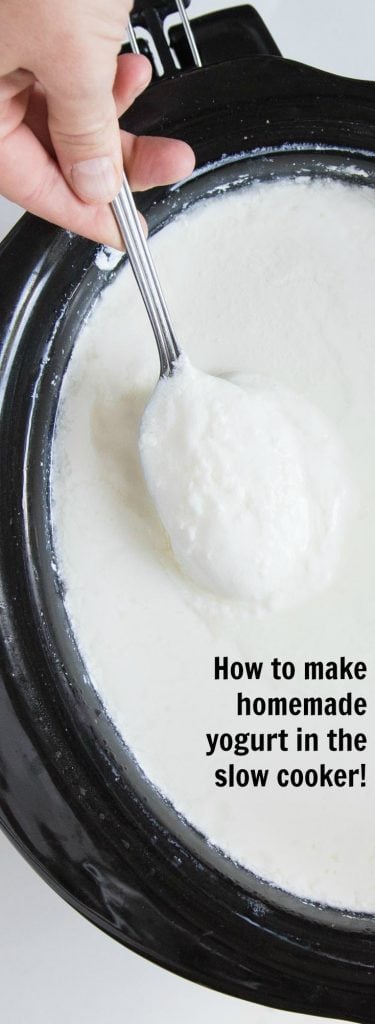
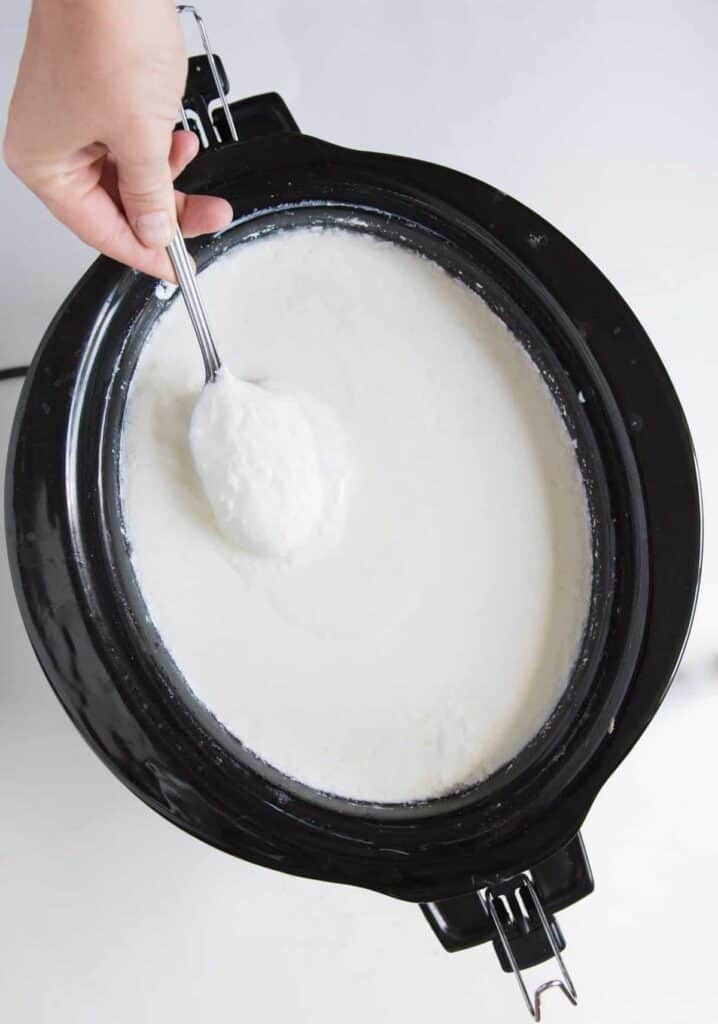

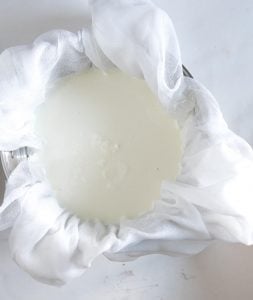
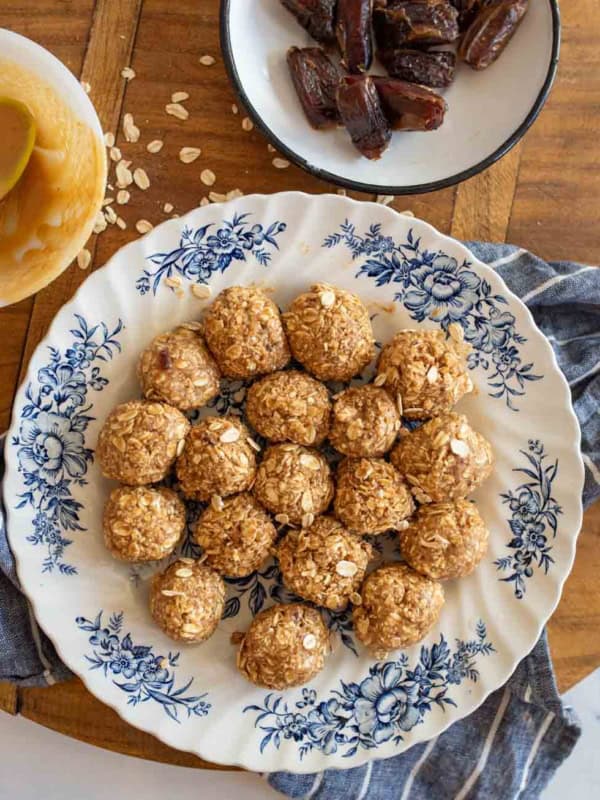
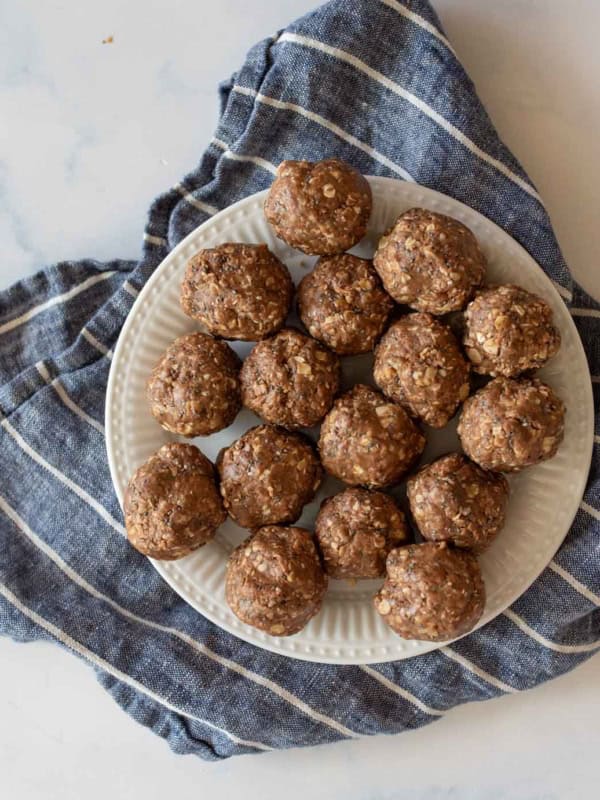
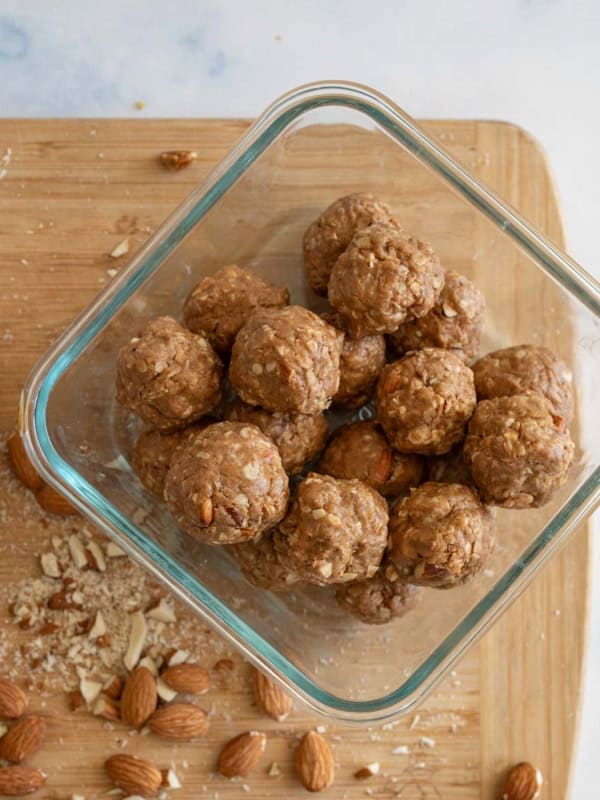
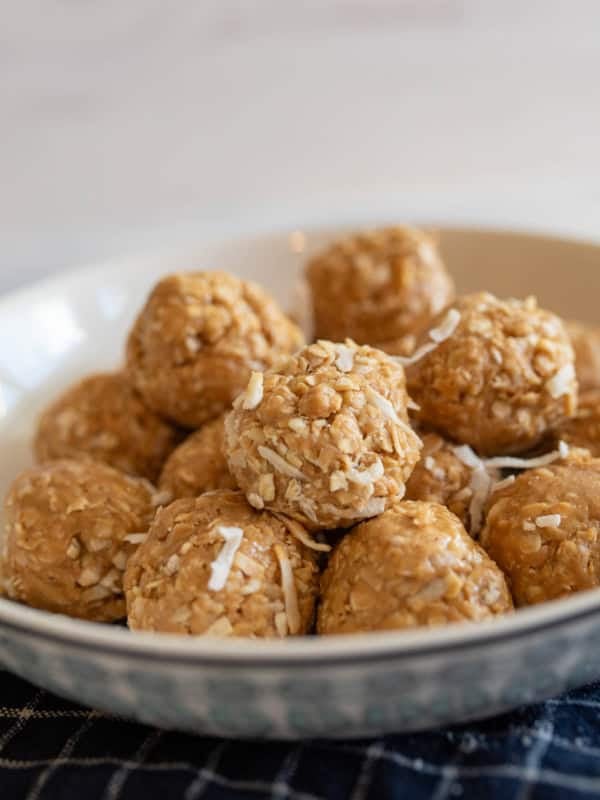






Hi! Can I make half recipe? A quarter gallon and 1/4 cup yogurt?
Does it still works? Maybe if the pot is too big it wouldn’t work 🤔
Thanks!
You can make smaller amounts you are going to need to go off of temperatures and not time amount though because smaller amount of milk will heat the to temps and cool back down at different rates.
First time I tried it, without a thermometer, just following the instructions (except for 1 thing I’ll mention in a minute) it was the best Greek yogurt I’d ever had. The 2nd time I wasn’t careful and ended up with a Kefir consistency liquid I used in cooking and on granola. The 3rd time I had a borrowed thermometer but tried to use some half & half that had gone bad, not a good idea. I made Irish Soda bread and sour-milk pancakes and who knows what else until I finished it. Now, this is my 4th try. I purchased a thermometer, I’m paying attention, AND (now I’ll reveal my secret) I use powdered milk, double strength which is how I come out with a product with the perfect consistency of Greek yogurt. I hope. If I do everything right this time.
So, instead of saving and adding a bit of H/M yogurt to make the next batch, could you just save and use the whey?
It should be loaded with the same cultures for the next batch.
I have never tried it with whey only…
I’m on a keto diet and am excited to try this. Can I use half whole milk and half heavy Whipping cream to decrease the carbs and increase the fat content with the same results?
I haven’t tried it but I would love to hear if you do and how it works out! In my mind it would work fine though…
Having read your process/recipe I am now wondering about something for which you probably have the answer. Is kefir essentially yogurt that has had the whey blended in to make it more liquid and drinkable? If not, then what is the main difference between kefir and yogurt? And thank you so much – it will be your information that I will be using tomorrow to give it a whirl!
Kefir is actually a different culture of live and active bacteria! Here’s some more details on it: https://lifewaykefir.com/kefir-vs-yogurt/
do you know the times if I want to use a whole gallon of milk?
They’ll be really close to the same.
First time making this- I’m in the UK so used my canning thermometer (in C) and semi-skimmed milk with a full fat Yeo Valley as a starter. I was shocked by how much whey drained off but, after chilling, it’s proper Greek consistency! Definitely a convert… it won’t necessarily be cheaper, but my single use plastic consumption will be reduced!
It looks amazing!
CAN YOU USE ACIDOPHILUS PILLS INSTEAD OF A STARTER YOGURT?
I haven’t played with it but I bet that you could!
I am excited to try this recipe next weekend, but we need to order a thermometer first. I have one question: when straining the yogurt, should I leave it on the kitchen counter or put it in the fridge? Thanks!
You can do either one, I normally strain it at room temperature and then move it to the fridge just for space purposes.
After wanting to try yogurt-making for years, I made this yesterday and was so excited to get up this morning to see if it worked. It did! Thank you so much for this recipe! You explained everything in such a clear way that really helps for someone trying this for the first time. I’m definitely going to keep making this! Thank you, thank you, thank you!
Hooray! So glad it worked out for you!
Excellent recipe ! Thank you Melissa!
The yogurt comes out thick and delicious !
Just a question, why scalding the milk with store bought milk which is already pasteurized ?
I used to make yogurt on the stove top and putting the pot with the yogurt in it in the oven nicely wrapped in a blanket but your recipe is so much easier .
Thanks again !
Have a great day !
The scalding has something to do with heating and breaking down a protein in the milk which helps the yogurt to be thicker, I’m not positive on the details but it’s something along those lines.